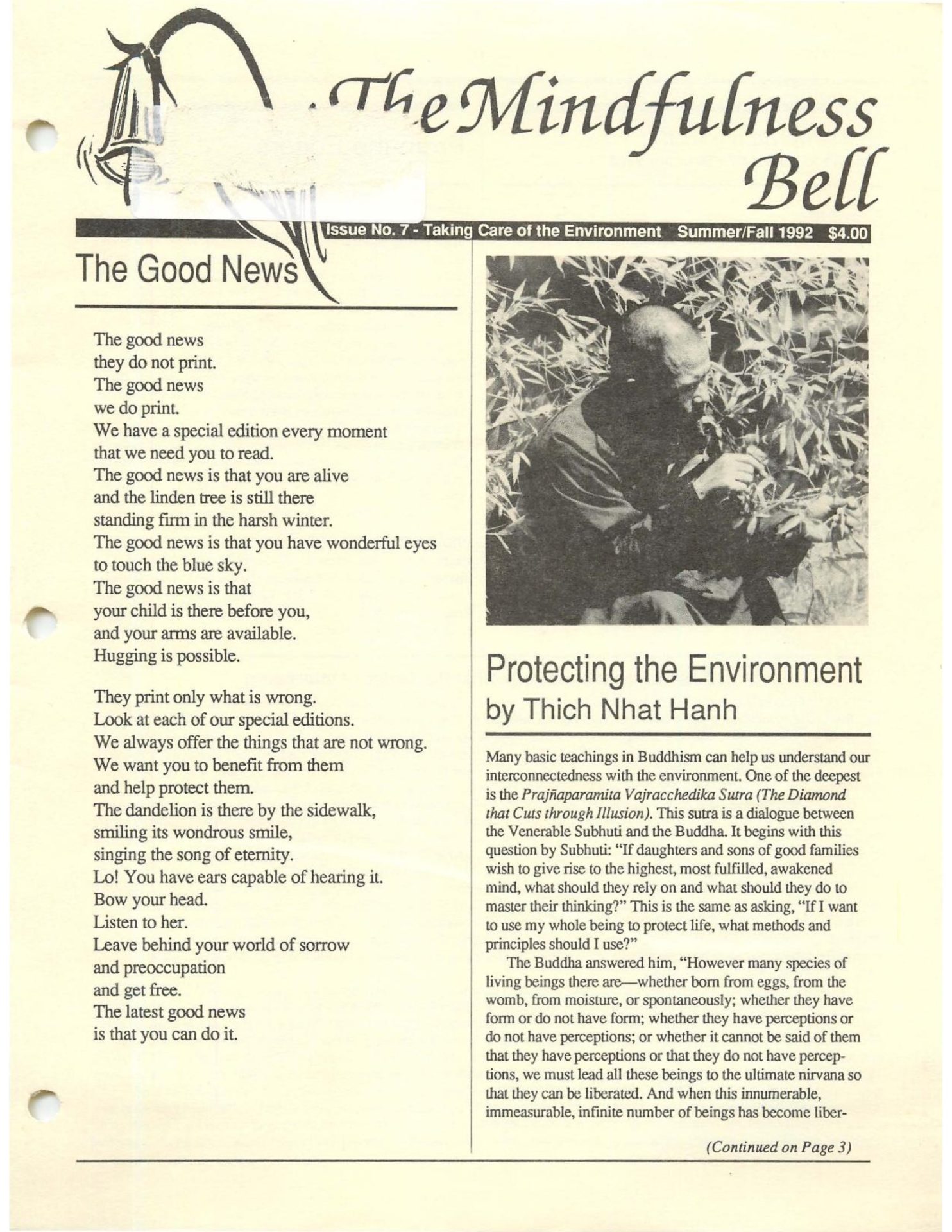In the mid-1960s in Vietnam, six young members of the School of Youth for Social Service were ordained by Thich Nhat Hanh into the Order of Interbeing (Tiep Hien), expressing the willingness to bring Buddhism into the realm of social action during a period of war. Since then, 150 Vietnamese and non-Vietnamese lay practitioners and clergy from all over the world have been ordained into the Order’s core community, and thousands more have chosen to practice as members of the extended community by practicing mindfulness with a local sangha and practicing and reciting the Fourteen Precepts.
In the mid-1960s in Vietnam, six young members of the School of Youth for Social Service were ordained by Thich Nhat Hanh into the Order of Interbeing (Tiep Hien), expressing the willingness to bring Buddhism into the realm of social action during a period of war. Since then, 150 Vietnamese and non-Vietnamese lay practitioners and clergy from all over the world have been ordained into the Order's core community, and thousands more have chosen to practice as members of the extended community by practicing mindfulness with a local sangha and practicing and reciting the Fourteen Precepts. Nearly half the members of the core community gathered at Plum Village in late June for the first international Council of the Order of Interbeing.
The first session was held on one of the last evenings of the "Vipassana in the Mahayana Tradition" retreat, and everyone attending the retreat was invited. Sister Annabel Laity spoke about the tradition of Council in Buddhism, Sister Phuong about the history and development of the Tiep Hien Order, Arnie Kotler about the precepts, and Judy Gilbert about the charter. Questions of what to be discussed during the two-day meeting were raised, and while some felt exhilarated by the process, others felt dizzied by this kind of discussion even before the end of such a deeply settling retreat with Thay.
At the first morning meeting, on June 29, Thay listened as we continued to discuss our resistances to becoming "organized," primarily concerns of losing the open-minded spirit that moved many of us to join the order. In the afternoon, we divided into groups, each focusing on a different topic: Charter, Practice, Communication, Action, Vision, and OWOW ("Other Ways of Working"). Reports by each committee were presented that evening. The process of working through our resistances and then discussing topics that were so important to us, in a mindful and loving way, began to create a cohesion that culminated in a kind of shared bliss by the meeting's end.
We began the second morning with a precepts' recitation ceremony. Then, after breakfast, we discussed the formation of a Council of Elders (to provide stability and wisdom), a Council of Young Persons (to make sure we are always open to the fresh ideas of the young generation), and an Executive Committee (to help carry out the work). Then we met in committees for a second time, trying to tie up loose ends and prepare resolutions for the full meeting. In the afternoon, we nominated, by consensus, members to fill the two councils and the executive committee, with the full encouragement and participation of Thay and Sister Phuong. These nominations will be presented by mail to members of the core community for their approval and will then be announced in Mindfulness Bell #8, along with the resolutions. Our time together ended with a lovely chai (Indian tea) meditation and a brief ceremony to commemorate loved ones who had passed away or were suffering. So much was accomplished in an atmosphere of mindfulness, care, and nurturing that the Council itself proved to many of us that intelligent organization and the practice of awareness can go very well together. A full report will appear in the next issue of the Mindfulness Bell.

